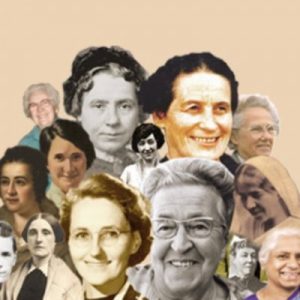Thirteenth Century
AN ACCOUNT OF THOSE WHO SUFFERED IN THE THIRTEENTH CENTURY
SUMMARY OF THE MARTYRS IN THE THIRTEENTH CENTURY
[The way and entrance to the martyrs of this century is through the valleys of Albi and throughout France, England, and other countries, where the pious witnesses of Jesus laid down their lives for the evangelical truth.
From the year 1209 throughout this century, crusades are preached in the name of the pope; which were the cause of the destruction of thousands of Albigenses, who lived quietly and peaceably under certain papistic authorities; for certain reasons, however, we have not finished this account.
Remarks with eight reasons unanimously indicating the nonresistant principles of the true Albigenses; nevertheless, for important reasons, we have placed the account of their martyrdom for the
* The following words are obscure in the author; hence we experienced difficulty in translating them.-Van. Braght.
most part in a marginal note, for the years 1210 and 1211.
One hundred and eighty persons called Albigenses, burnt without the castle Minerve, A. D. 1210.
Sixty of those people end their lives by fire, for their faith, at Casser, about A. D. 1211.
About one hundred persons, who confessed the same doctrine, burnt alive in a tower at Cassas, about the close of A. D. 1211.
Fifty of their fellow believers likewise lose their lives by fire, at Chastelnau d’Ari, about the close of A. D. 1211.
Over four hundred persons, who professed the same profession, though called Induti, at Lavaur, or Vaurum, rather suffer themselves to be burnt to death by the terrible flames than accept the Roman faith.
ACCOUNT PROPER OF THE HOLY MARTYRS
Great persecutions of the believers, A. D. 1206. A man, at London, in England, burnt alive for the faith of the Waldenses, A. D. 1210; and twenty-four persons at Paris, in France, likewise put to death by fire, for the same religion.
In the year 1212, about one hundred persons called Waldenses, are put to death by fire at Strasburg; thirty-nine at Bingen, and eighteen at Mentz.
Account of a cruel inquisition, A. D. 1214, over the doctrine of the Waldenses; Conrad of Marpurg, the chief inquisitor, and his mode of examination with red-hot iron, as well as with hot and cold water; also, the oath which the inquisitors in the bishopric of Utrecht were wont to put to those who were then called heretics, abot A. D. 1215.
About eighty persons called Waldenses, burnt for the faith, at Strasburg; also some Christians at Toulouse, about A. D. 1215.
Gerard de la Motte, a deacon of the Christians called Albi-Waldenses, with some of his fellowbelievers, sacrificed by fire, at Borriens, A. D. 1227.
Several papal statutes and ordinances against the Waldenses, related for the year 1229.
Severe persecution, through the Inquisition, in Germany, where very many Waldenses are burnt for the faith, A. D. 1230.
Three decrees of Emperor Frederick II are successively described, for the year 1230; another severe persecution of the Anabaptistic Waldenses, in Germany, A. D. 1231.
Nineteen persons of the same profession, burnt in the bishopric of Toulouse, A. D. 1232; also, two hundred and twenty-four in a place near Toulouse, A. D. 1243; a rigorous inquisition in the aforesaid bishopric, A. D. 1251, which was carried also into the following year.
Decree of Pope Urban III against the Waldenses and Albigenses in Lombardy and about Genoa, A. D. 1262; great persecutions, about A. D. 1280, 1283, 1284.
Gerard Sagarellus burnt at Parma, A. D. 1285; Herman, Andrew, and Guillemette [Wilhelmina], exhumed, A. D. 1299. Conclusion.]
The valleys of Albi, the region around Toulouse, yea, all France, England, and other kingdoms, furnish us, during this century, many martyrs, who, though, they, with reference to the severity of their tortures, according to the flesh, were pitiable and most miserable, suffered nevertheless with good cheer, yea, with joy, in consideration of their sure hope and unshaken confidence in the Lord, as being their shield and exceeding great reward.*
As regards the persecutions that occurred in this century, against the Waldenses and Albigenses, they by far surpass all other persecutions of which we read in the preceding centuries; for it seemed now as if the very furies of hell, so to speak, had broken loose, to destroy all believers, yea, almost the whole earth.
In the years 1209-12, 1225, 1234, yea, throughout the entire thirteenth century, crusades, or socalled holy, voluntary preparations of war were preached, by order of the pope, for the extermination of the Waldenses and Albigenses, all over the world, but more particularly in the kingdom of France.
These crusades consisted in great armies of Roman Catholics, who voluntarily enlisted in this socalled holy warfare; each distinguished by a white cross on his breast, or one of white cloth sewed on his garment; on account of which crosses these armies were called Crusades.
But that they might acquit themselves the more courageously and intrepidly, in exterminating the Albigenses and Waldenses, yea, that they might suffer none of them to remain alive, but kill them by fire, sword, gallows, and other means, the pope most solemnly promised to all who by so doing should meet death, or fall by the weapons of the princes seeking to protect the Albigenses and Waldenses, full remission of all their past sins, yea, that they should straightway go to heaven.
This had the effect, that countless multitudes flocked together, as it were, to the honor of God, and for the extirpation of the so-called heresies, in order to obtain forgiveness of sins, and thus dying find salvation; and having, under certain chieftains, been formed into armies they marched forth and engaged alone in murdering, burning, desolating and tyrannizing among the Waldenses and Albigenses, sparing not even the infant in the cradle. It is impossible to relate how great a multitude of these innocent people perished, and under what severe torments, simply on account of their true faith.

Leave a Reply